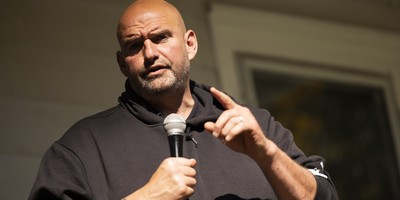Author’s Note: Today’s column is Part II in a three-part series of letters. The first was called “Running on Empty.” The final installment will appear next week.
Dear Eric:
There is an old abandoned railroad track that runs up the side of a mountain just outside of Manitou Springs, Colorado. Its 2753 steps lead you 1.2 miles up the mountainside – sometimes climbing at angles of over 60 degrees. The steps are even at first but they become uneven somewhere along the way. There is also a false summit that greets you after 2200 steps. When you reach it you think you’re done but you aren’t. There are 500 more steps to go to reach the top of the mountain.
Since a couple of 19-year old staffers at Summit Ministries, named Libby and Jessica, were climbing the incline every other day I assumed it would be easy. So, one afternoon after teaching my classes at Summit, I ran three-quarters of a mile from my cabin to the base of the incline. My cabin was about 6400 feet above sea level. The first steps of the incline are around 7000 feet above sea level.
After I charged up the first 100 steps of the incline I was already winded. So I resorted to Plan B. I decided to catch my breath and come back the next day and tackle 200 steps – then 400, 800, 1600, and, finally, the whole thing after (hopefully) only six tries.
The plan didn’t work as well in reality as it had in my mind. The day I was supposed to climb 1600 steps was brutal. At around 1300 steps my heart and lungs felt like they were about to explode. So I sat down and pondered the pathetic physical shape I was in. I also pondered my propensity to end sentences with prepositions.
While I was sitting there some teenaged chick just stepped around me while she was climbing the incline and talking on her cell phone simultaneously. How much more embarrassing could this get? Was this the same body that once ran a half-marathon in 88 minutes? Was that really 28 years ago, back in 1982? Doesn’t boasting about one’s athletic prowess in 1982 make one sound a lot like Uncle Rico?
Recommended
Sitting there on those steps watching people prance up the side of the mountain like they were riding on an escalator made me realize something very important. When our bodies begin to weaken it is usually a part of a very long and gradual process. We start to make more money in our jobs and so we eat out more often. Some of us start to drink heavier beers and smoke stronger cigars. In a nutshell, as we are getting more comfortable in life many of us are simultaneously getting weaker physically.
Our spiritual decline is a lot like our physical decline. We don’t just wake up one day lost with a feeling of general emptiness. We drift so gradually from our course so that we’re often lost before we know it. After we realize we are lost we often accelerate the pace of our decline my making even worse decisions than we did before we knew we were lost.
Some of us who have struggled with doubts about our faith have become so frustrated that we eventually decided it was easier to accept the label “agnostic” than it was to keep on struggling. Some people consider agnosticism a position of honesty. I think it is a manifestation of cowardice. I see no virtue in clinging to a label that embraces ignorance as a virtue.
It is not surprising to me that many agnostics later decide they are atheists. After one has let go of one’s faith, bad behavior often follows. And, make no mistake about it; our attitudes are often driven by our behaviors – although we like to see ourselves as thinking creatures whose every action is driven by well-considered ideas.
Put simply, the label “atheist” is a very handy tool for the person who wants to live his life for himself and not for others. “I don’t know” doesn’t always get people the satisfaction they are craving. For many, God must be kicked out of the equation altogether. That is the emotional allure of atheism. It is the opiate of the masses.
After one has made a formal declaration of atheism the real intellectual atrophy sets in. It is the kind of atrophy that leads to far more serious errors than ending one’s sentences with prepositions. It leads to other hallmarks of intellectual laziness such as the willingness to consider moral and cultural relativism to be “true.”
When I arrived at that very weak and indefensible place – an atheist who had rejected God and “accepted” moral and cultural relativism – there was only one thing I could do to turn things around: I had to step out of my comfort zone.
It is easy to see how stepping out of one’s comfort zone is necessary to detect and remedy a physical decline. For me, swearing off the beer and stogies except for an occasional trip to Stone Street Cigars (my apologies to Greg the Apologist) was just the beginning. The fried foods and sodas had to go, too.
It would take a lot of discomfort but the results were magnificent. Like so many people who reach the top of the incline I just had to keep going back to shave a few more minutes off my time. By August, I felt better than I had felt in over a quarter of a century.
Detecting and remedying one’s spiritual decline also involves stepping out of one’s comfort zone in ways that people seldom contemplate. It can’t be done by attending one of Joel Osteen’s motivational seminars. I’d rather listen to advice from a fat man who lives in a van down by the river.
Nor can one’s spiritual decline be remedied by reading the likes of Don Miller. Don will try to make you feel better by telling you the “rules” of Christianity aren’t that important. But, in the end, Don’s quasi-Christianity will facilitate more spiritual decline than it reverses.
Key Two: What one needs to turn one’s life around is radical, bold action that involves taking risks and experiencing extreme discomfort. While prayer is indispensible, it isn’t enough. There comes a time when you have to un-bow your head and move forward - even if it means risking a confrontation with abject evil and unrelenting human misery.

























Join the conversation as a VIP Member